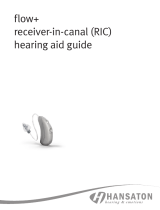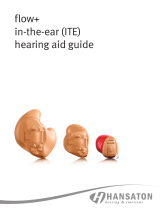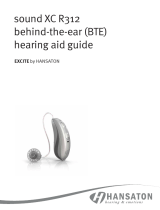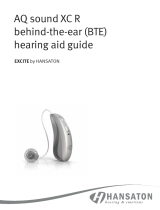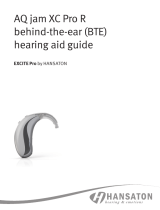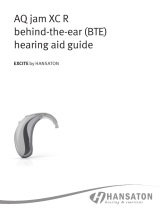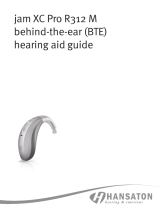
10 11
experience interference from a cell phone
being used close by, you can minimize this
interference in a number of ways. Switch
your hearing aids to another program, turn
your head in a dierent direction or locate
the cell phone and move away from it.
Too high distortion during dialing or
phoning may mean that the phone handset
is stressed by the magnet. To avoid any
damage, please move the magnet to
another place on the telephone receiver.
Note to hearing healthcare professional
Domes should never be tted on patients
with perforated eardrums, exposed middle
ear cavities, or surgically altered ear
canals. In the case of such a condition, we
recommend to use a customized earmold.
Labeling
The serial number and year of manufacture are
located inside the battery door.
Cell phone compatibility rating
Some hearing aid users have reported a buzzing
sound in their hearing aids when they are using cell
phones, indicating that the cell phone and hearing
aid may not be compatible. According to the ANSI
C63.19 standard (ANSI C63.19-2011 American
National Standard Methods of Measurement of
Compatibility Between Wireless Communications
Devices and Hearing Aids), the compatibility of
a particular hearing aid and cell phone can be
predicted by adding the rating for the hearing aid
immunity to the rating for the cell phone emissions.
For example, the sum of the hearing aid rating of 4
(M4) and a telephone rating of 3 (M3) would result
in a combined rating of 7. Any combined rating
that equals at least 5 would provide “normal use”;
a combined rating of 6 or greater would indicate
“excellent performance.”
The immunity of this hearing aid is at least M4/
T4*. The equipment performance measurements,
categories and system classications are based
upon the best information available but cannot
guarantee that all users will be satised.




















